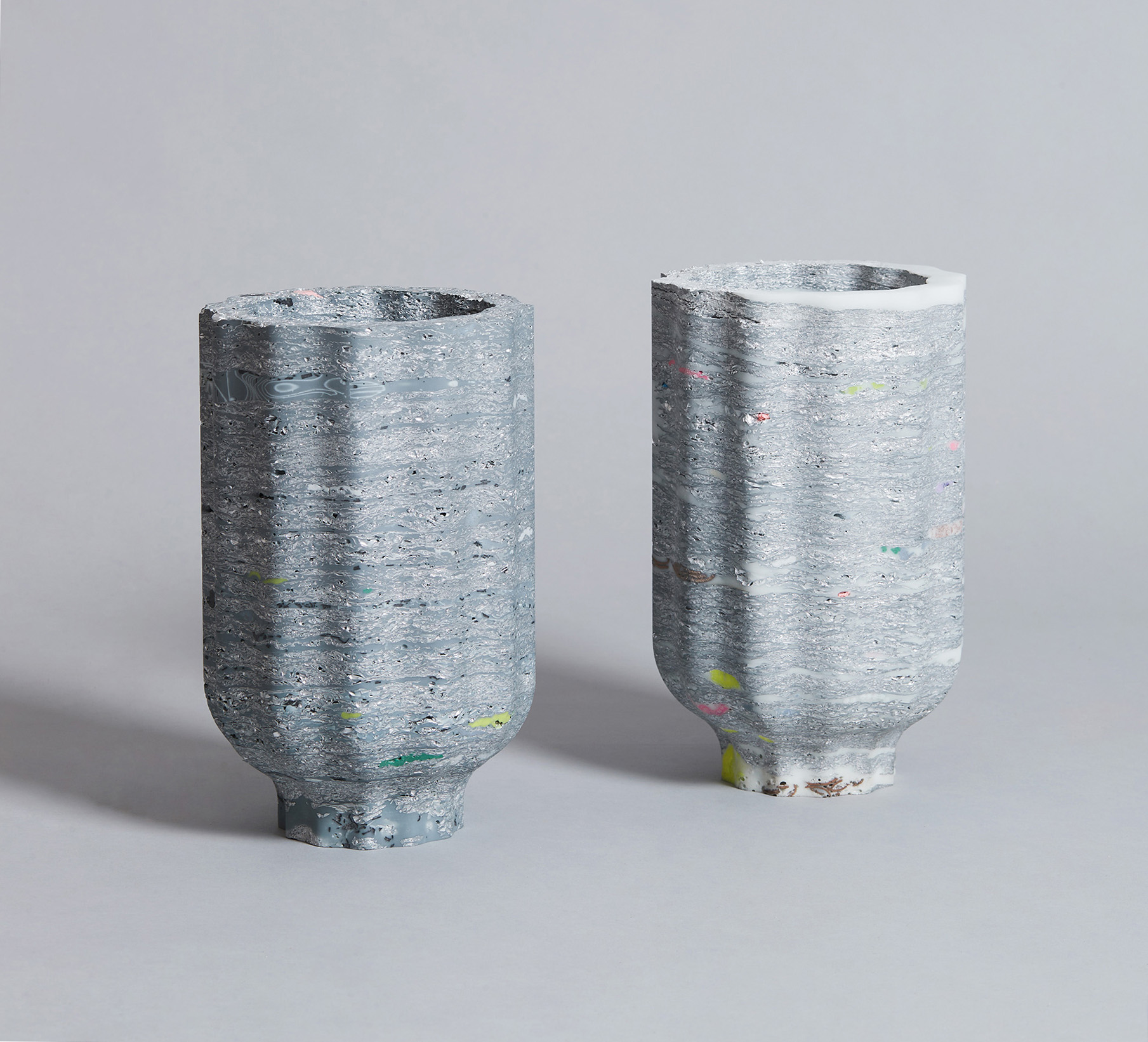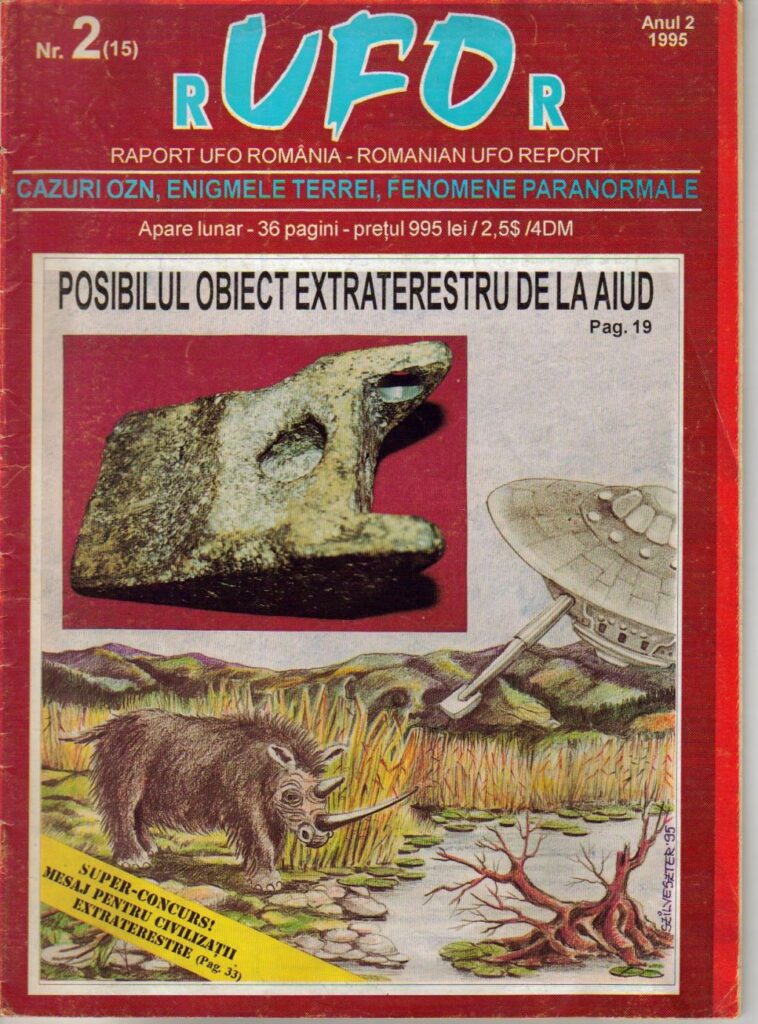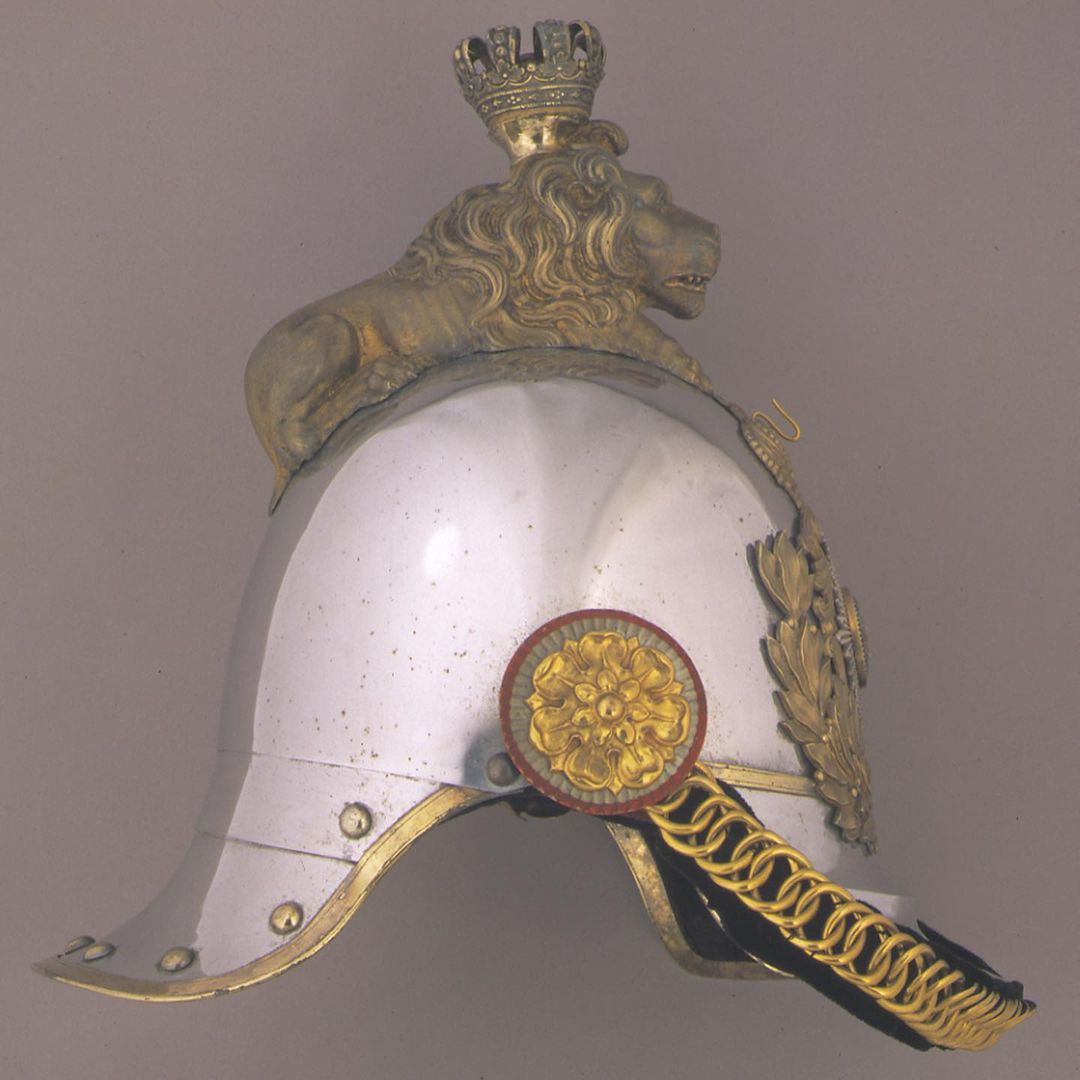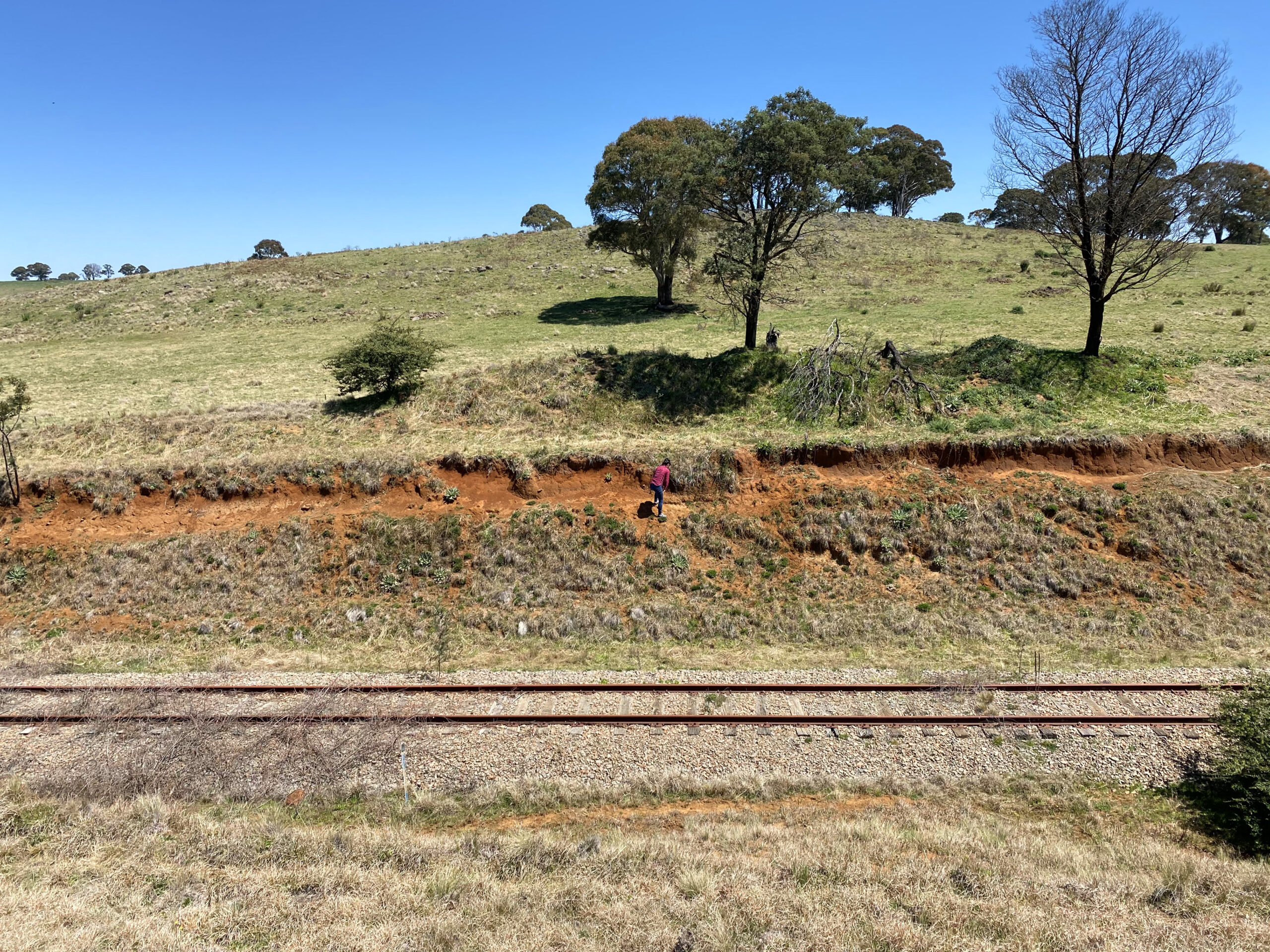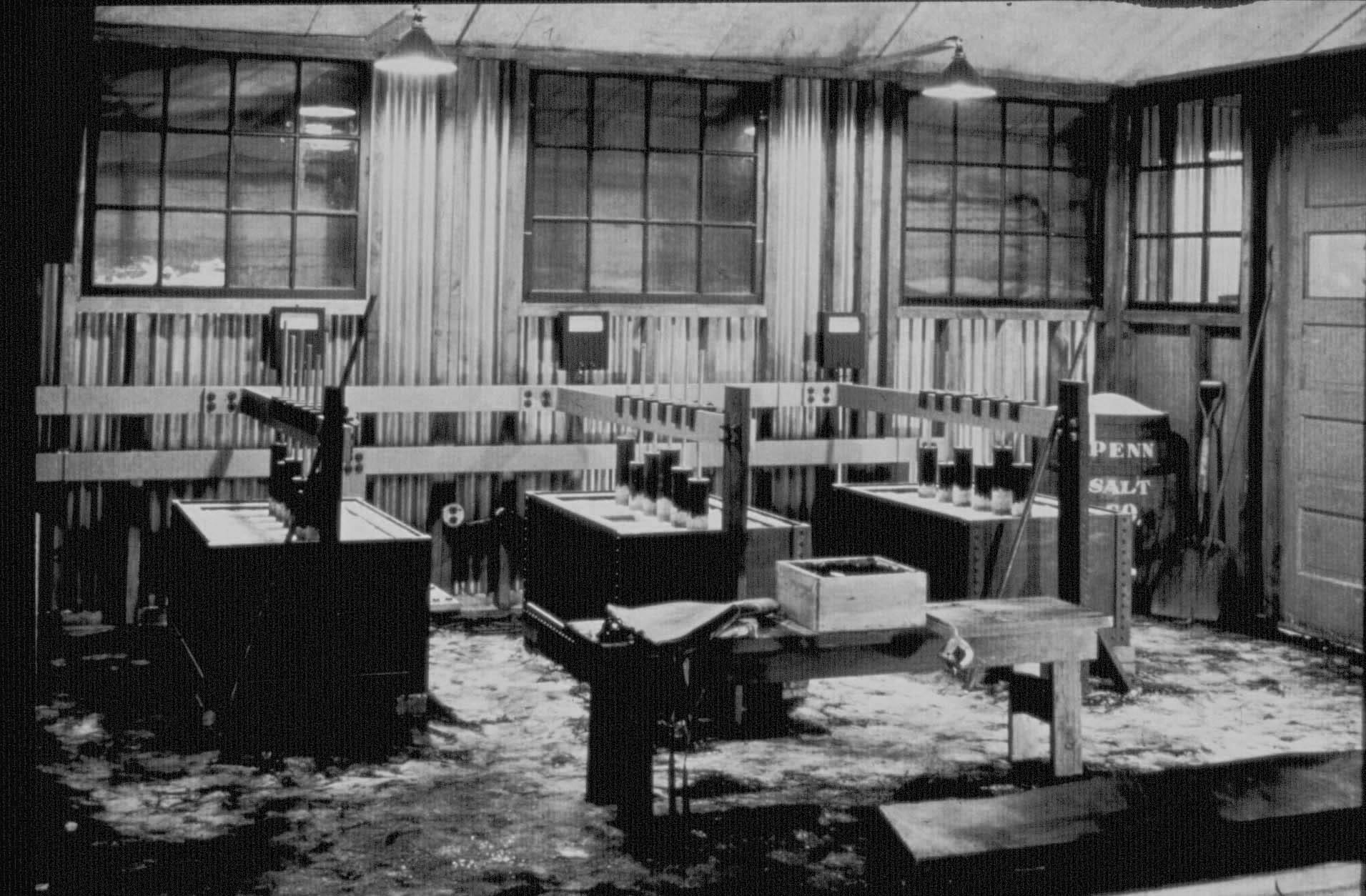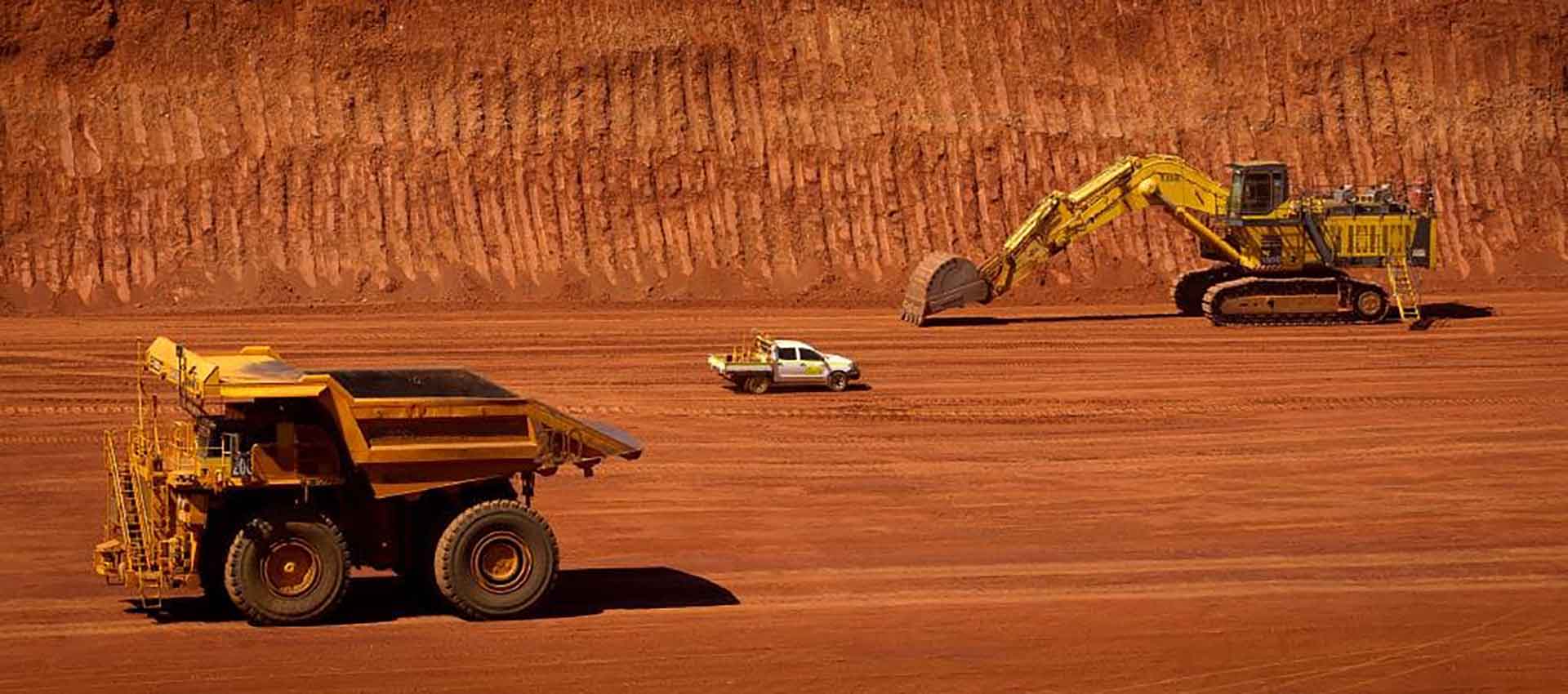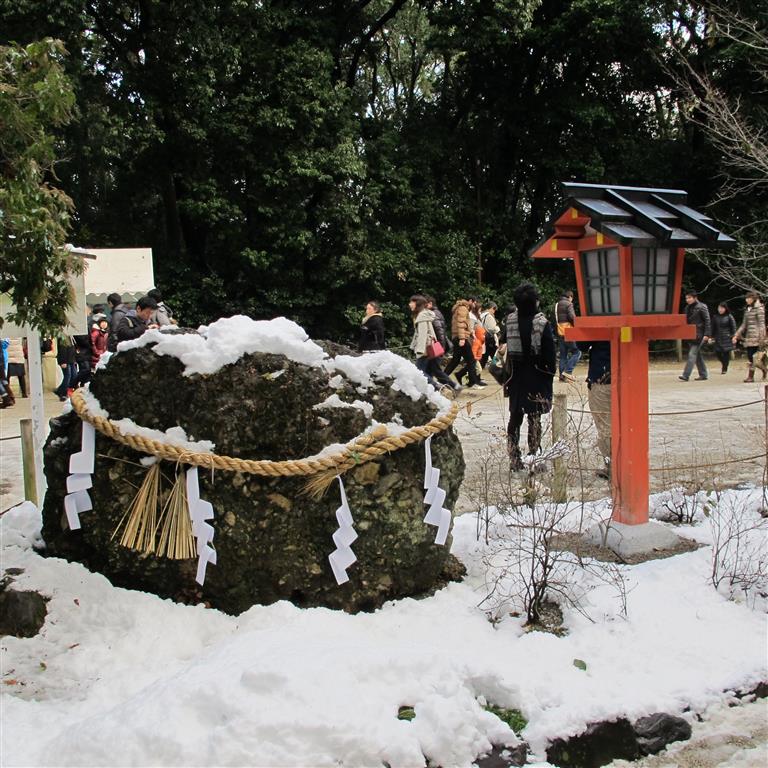Works in Aluminium: vases and mirrors
Works in collaboration with Kyoko Hashimoto
There is 746 million tonnes or 80kgs per person of manufactured aluminium available on the earth at present. It is endlessly recyclable. Given the environmental consequences of making new aluminium, is this amount sufficient to fulfil our needs for all time?
I and co-designer Kyoko Hashimoto have recently completed new works using aluminium for the National Gallery of Victoria’s Sampling the Future exhibition opening this month. As critical designers, this gives us an opportunity to not just explore the capacities of aluminium for design, but reflect on its place in human history, culture, industry and environment.
The works include two vases, made from a complex material design, a custom aluminium-polymer composite we called ‘metalloplastiglomerate.’ These vases were acquired by the National Gallery of Victoria in 2023. The second works are two mirrors of a simple design: slabs of hand-polished aluminium inserted into bauxite, the rock from which aluminium is extracted. Influenced by the aesthetics of Japanese Shinto, which has its own tradition of mirror making, we intend for these objects to spark thinking about the geological, political and the ‘animist’ aspects of aluminium. This is to consider its life, past and future within and on the earth.
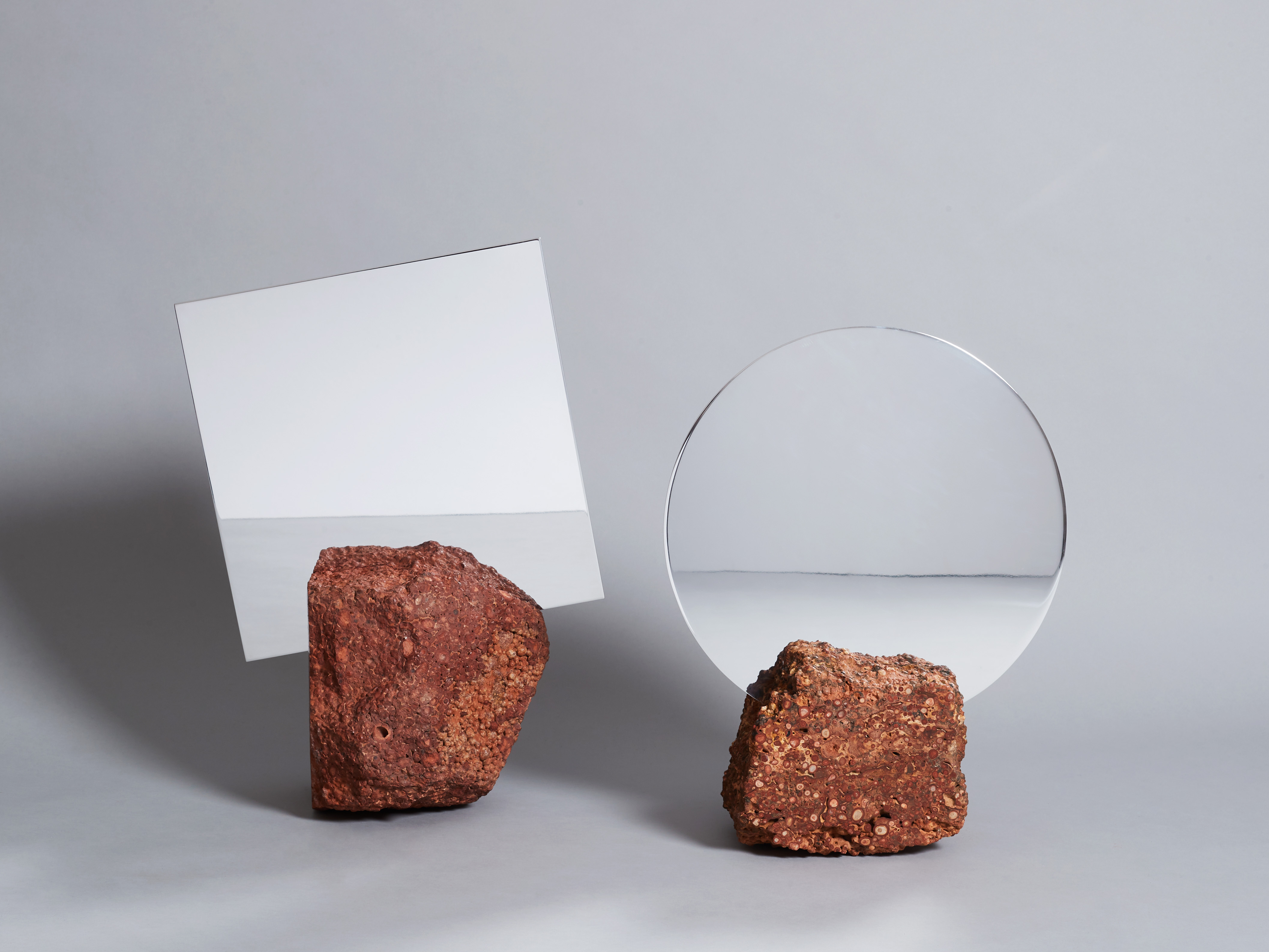
The mirrors are hand polished and on close inspection some fine lines and subtle warping in the reflection is apparent. We like these details because they allude to the imperfections of historical mirrors made from metals like brass and silver, popular before glass mirrors. Such mirrors were highly valued. The Roman philosopher Seneca, writing around 65CE, remarked “For a single one of these mirrors of chiseled silver or gold, inlaid with gems, women are capable of spending an amount equal to the dowry the State once offered to poor generals’ daughters!” (Questions naturelles, I, XVII.)
Its intriguing to think about how popular aluminium might have been for mirrors in the ancient world – if it had been discovered then. But, despite the occasional archaeological claim asserting ancient or alien origin, aluminium is firmly an invention of the 19th century, the consequence of many slow, incremental discoveries in the modern world.
Aluminium’s arrival in the 19th century is highly significant: one of many new practical metals of the Industrial Revolution, and now the most widely used. But, for a time, it was rare, novel, highly sought after and more expensive than gold. Napoleon famously made a baby’s rattle from it, and used aluminium cutlery to impress dinner guests. Though this may be a myth, the story goes that the guest marvelled at how light and strong the cutlery was to hold in the hand. In 1884 it was used for the pyramid cap on top of the Washington monument as the most exotic metal of its day. While not quite as impervious to decay as gold, it tarnishes less than silver and is just as reflective. But it is relatively ductile and easy to scratch, so aluminium mirrors must be carefully handled.
Above, the aluminium helmet of Frederik VII of Denmark, made in 1859 when it was an extremely exclusive material.
Below, Spiderman grabs onto the aluminium cap atop the Washington Monument.
Aluminium is now familiar as a metal in vehicles, housing and consumer products. Its lightweight, strong and durable. On one hand its admired as a very technical metal used in aerospace, on the other its easily discarded as drink cans. Actually its used in huge range of products across all price points.
In the earth, it is very widely dispersed as the most common metal element, and the third after oxygen and sillicon. Aluminium is everywhere, dissolved in the ocean and found in plants and animals. In the human body its safely processed by the kidneys. But it is curiously absent from biological processes, and appears to have little role in plant or animal evolution so far. In fact, aluminium is toxic, so life may have evolved to reject aluminium. For example, siilicon plays a role in limiting aluminium biological availability. And due to the aluminium’s strong affinity, it also bonds rapidly to become aluminium oxide. This forms immediately on the surface of aluminium when cut, creating a protective layer against corrosion. In nature, almost all aluminium is found as an oxide. There are stable aluminium oxides in over 270 different minerals including sapphire and ruby, but most aluminium is found within locked inside rock, as bauxite.
Australia has some of the largest concentrations of bauxite and is the world’s largest miner. More bauxite is likely to be exploited in the future as mining exploration heats up around the country in response to increased demand for technological metals and geopolitical uncertainty around supply chains. Some places are already of interest, like Guyra in NSW’s New England Tablelands region, where Kyoko and I did some fossicking last year. While we are not geologists and are quite naive about geological methods, we knew that bauxite was typically found under several metres of soil and clay. We scoured around the cuttings of the abandoned Guyra railway and found some bauxite-like rocks. Later we used Minview, a publicly available mining tracking tool, to find the location where bauxite was sampled just north of Guyra town, close to the old train lines, and from around the depth of 5 metres.
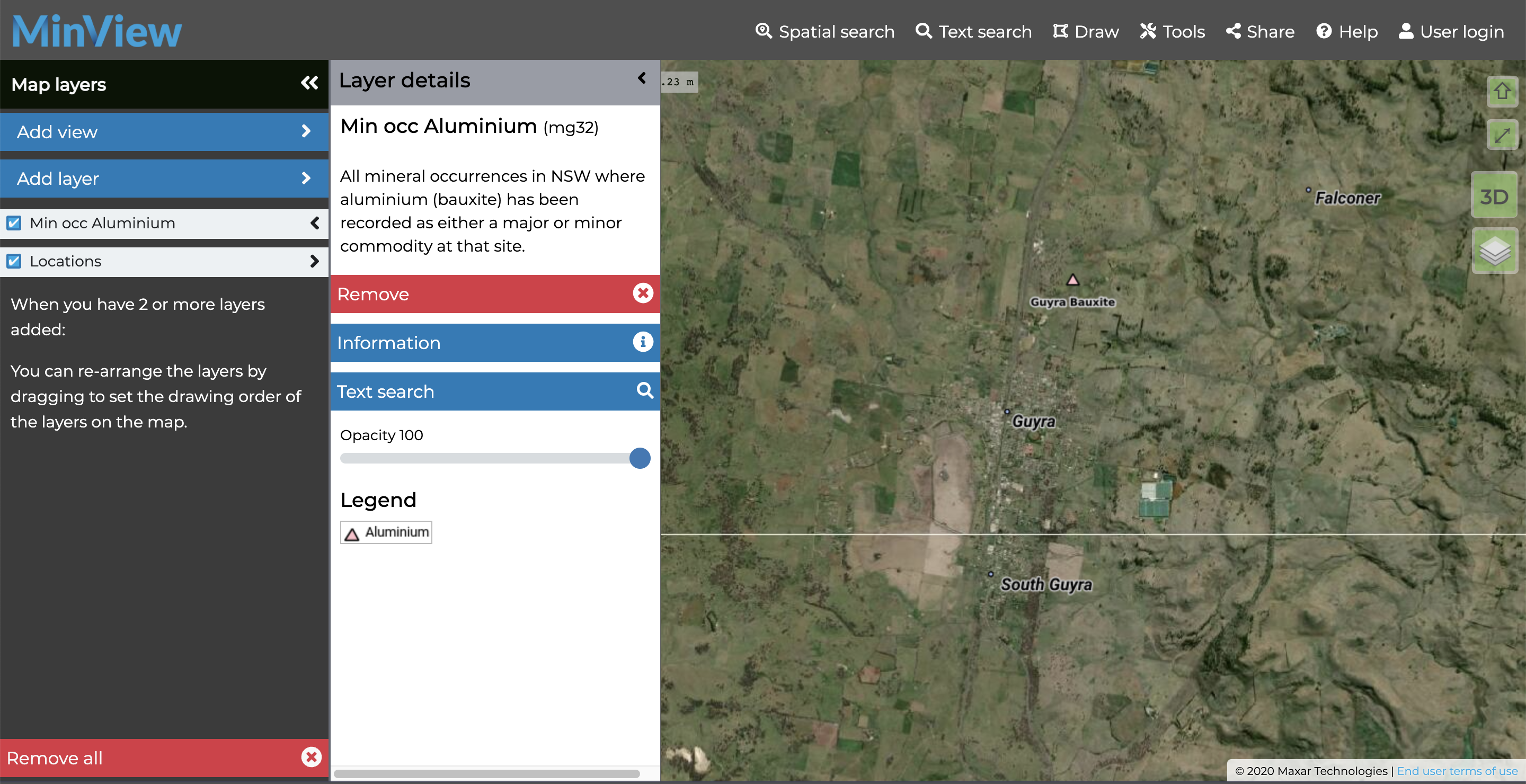
The size of the polished aluminium mirrors relative to their rocks loosely corresponds on the extraction efficiency of producing aluminium from bauxite. This ranges from 1:4 to 1:8 by weight depending on the ore quality and the technology used, but is typically around 1:6 in Australia, meaning that it takes 6 tonnes bauxite to produce 1 tonne aluminium. But it is not necessarily the material efficiency of this extraction process that is alarming, but the energy efficiency. Because aluminium is so tightly bound to its oxides, the energy required to separate it is intense. The production of new aluminium from bauxite uses a massive 10% of all Australian electricity. One smelter by itself, Tomago near Newcastle, uses 12% of all electricity in New South Wales. The intensity of the multi-stage chemical processing creates toxic byproducts and pollution that must be carefully managed. Though there is a trend to move aluminium production to countries with cheap and sustainable energy from geothermal sources, much production takes place countries with cheap fossil fuel energy, and sometimes poor environmental safeguards too. The irony of aluminium’s lack of rarity as ore and as manufactured metal is that we treat it as ubiquitous and common, but its production is enormously damaging to the earth and to climate.
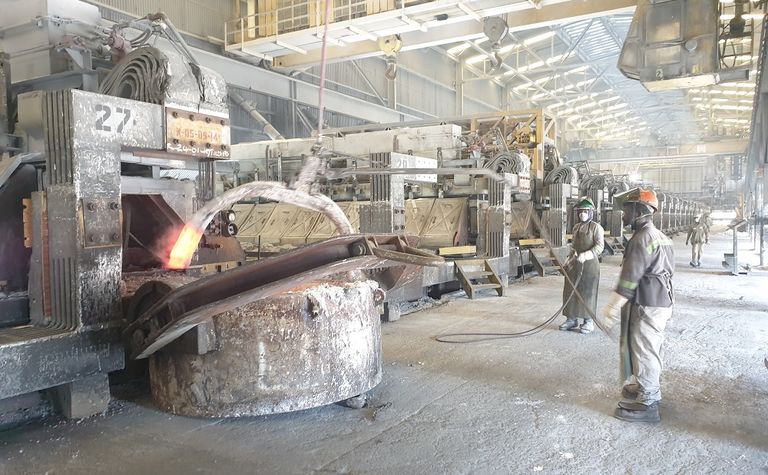
Above: aluminium smelter in Ghana.
Conversely, recycling aluminium takes just a tiny fraction of that energy. Aluminium has a relatively low melting point for a metal and recycling can be done at small and large scales. The aluminium industry is already fairly good at recycling, with around 70% of aluminium in Australia being recycled, mostly from industrial sources. However, the aluminium we obtained from our supplier, ‘5083’, a high grade, corrosion resistant magnesium alloy with traces of manganese and chromium, is newly milled, though our supplier told us they send their offcuts for recycling into lower grade products.
There are at least three issues relevant to increasing the recycling rate.
Firstly, industry demand for technically specific alloys complicates recycling. Trace metals used to increase rigidity, corrosion resistance or welding success, for example, need to be tracked within industrial by-product if recyclers want to easily do anything other than ‘downcycling’ into lower grade products.
The second is that aluminium is not well sorted in consumer waste. Household waste collection doesn’t cater to aluminium as a separate material, increasing the difficulty for sorting centres to identify and reclaim it. There is some new magnetic technology being deployed that even works on non-ferrous metals (using eddy currents), but nonetheless household waste sorting can be improved. Around 10 to 20% of households in Australia, most of regional and remote Australia, don’t even have kerbside recycling bins.
Thirdly, a lot of aluminium products are designed in ‘monstrous hybrid’ composites with materials that cannot be separated easily. This includes things like aluminium panels glued onto a plastic sheet, or aluminium impregnated resin. Most of these composite materials, if recycling is even attempted, cannot survive the aluminium recycling process and will burn up, creating pollution. These should be addressed at the design stage, with better solutions found in product development using circular design or ‘cradle to cradle‘ strategies. For example, Nestle, Keurig and other companies shouldn’t be using aluminium composites for their coffee pods, something even recognised, unfortunately in hindsight, by their own designers.
The end result of these problems is that aluminium is lost to human use, ending up in landfill, back into the natural environment or ‘biosphere’ and outside the ‘technosphere’ in which materials like aluminium can be endlessly recycled.
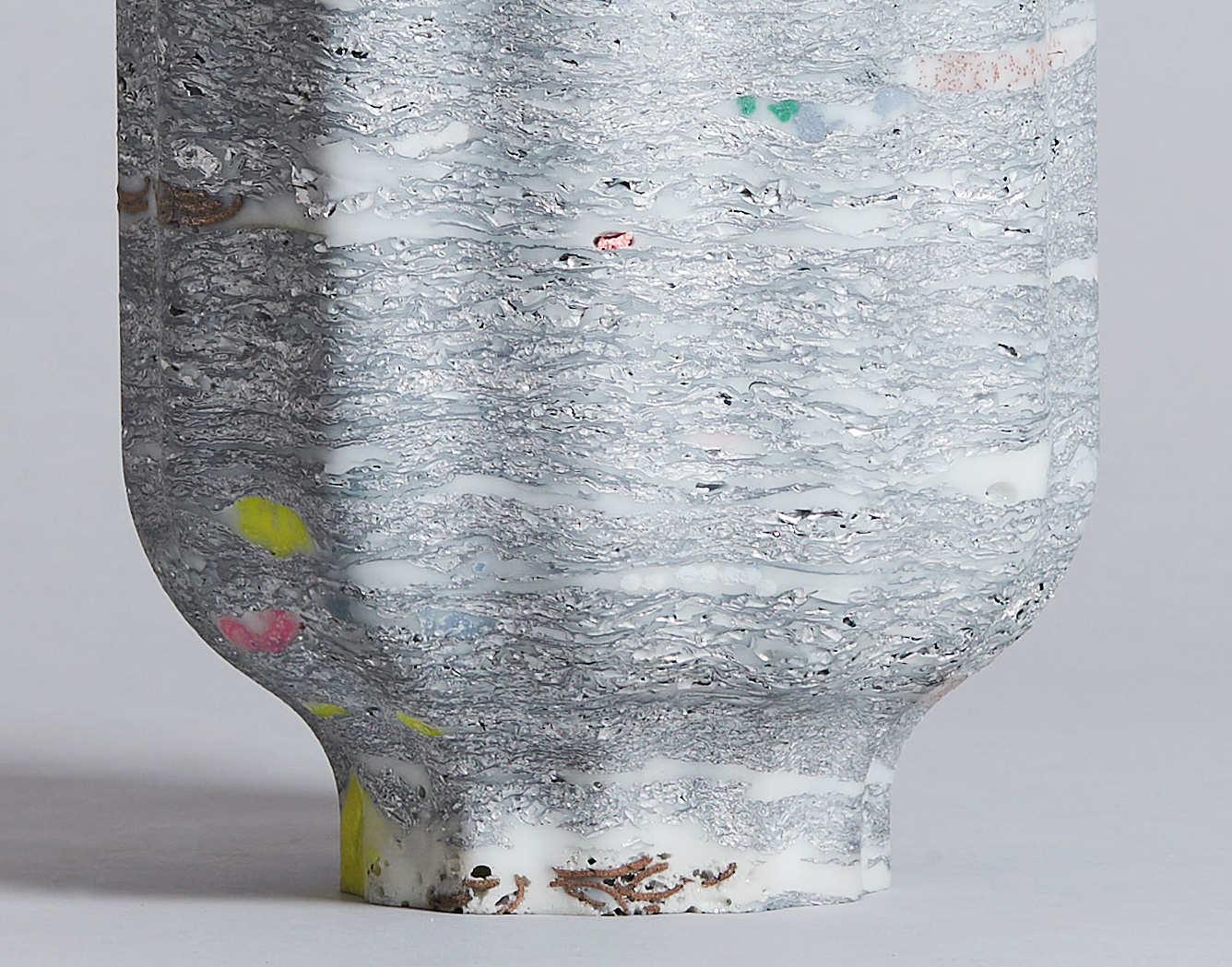
We illustrate this problem in the design of the metalloplastiglomerate vases. We make these vases by hammering and folding aluminium sheet around organic fibre, plastic and soft metal waste, in a gruelling handmade process intended to simulate what will happen to ‘lost’ aluminium as it forms into geological rocks of the future. The material mix itself is something found in landfill today, but what we propose is that in the far future, 10,000 or a million years from now, when our cities collapse, the industrial materials of our cities, including aluminium, will compress underground, forming new geological strata. This is not a speculation: we know already that the sum total of artificial materials “concrete, metal, plastic, bricks and asphalt” is now greater than mass of all living matter on our planet.
Such rock layers will concentrate in areas that lay underneath or flow downstream from cities. Very likely under the water of melted ice caps, as new ocean beds. These vases can be speculatively imagined as being ‘sampled’ from this material, as if they were extracted, cut and shaped from strata by distant descendants. We mimic this future material by folding and refolding crumpled aluminium sheet. Coincidentally, or perhaps not coincidentally, we discovered that the mathematics of crumpling paper has an analogous relationship to the fragmentation of rocks into sedimentary layers over thousand and millions of years.
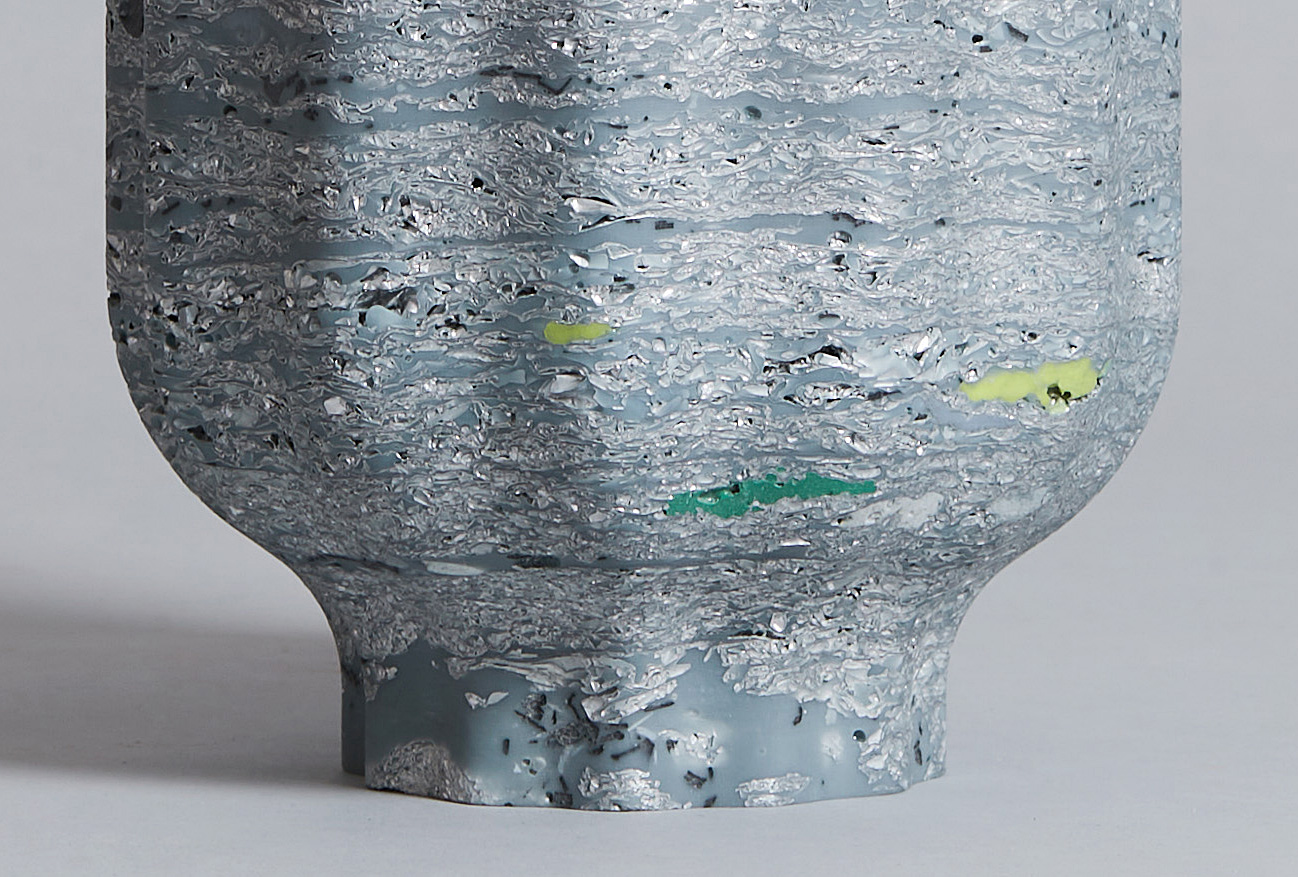
Returning to more present concerns….
Even if aluminium recycling could approach 100% in the foreseeable future, it is a current certainty that we will keep making new aluminium from bauxite. The world’s economic framework is a paradigm of ‘growth at all costs’. If we accept this,* it is interesting to consider how aluminium production could become more sustainable and ethical. There are some problems to surmount.
For starters, politically, in Australia at least, the production of aluminium is used to justify coal fired power stations. Smelters provide the high baseload needed for their operation on the electricity grid. Hydro power works well with smelters too, but the existing marriage of smelters and coal fired plants is now a right wing political argument, a conservative sophistry, deployed to justify the status quo and block climate change policy.
This is despite the fact that smelters using renewable energy from geothermal or hydro is not just possible, but desired by the industry itself. That said, historically the industry has been opposed to energy transitions. Smelters as subsided through secret electricity deals with government and the Australia Institute’s modelling argues we’d be better off economically closing down our smelters. Their report points out that our smelters are majority-controlled by overseas interests and we export most of our new aluminium. Most of our aluminium scrap is exported too. So it’s not as if we couldn’t supply our domestic market with fewer smelters operating.
While it can be argued that closing aluminium smelters will hasten the closure of coal stations, that is a moot point if production moves to another country using coal energy. Slowing our export of bauxite and increasing production at home could therefore potentially reduce global carbon emissions, but it’s critical our aluminium sector moves to renewable energy use.
One advantage to energy transitions is that aluminium smelters can be turned off for short time, for around 4 or 5 hours, to help stabilise the power grid in periods of peak power demand, such as in the middle of summer, to prevent household blackouts.
In terms of global citizenship, there is an argument that assuming if we can clean up the other environmental impacts, aluminium production from renewable energy is justified. But reducing our need for new aluminium is essential to smooth this transition, to facilitate the closure of non-renewable powered smelting and transition to sustainability more quickly. In many respects Australia has missed the boat on renewable energy development so the responsible thing to do is close the smelters powered by coal but also stop exporting bauxite or processed alumna to countries with fossil fuel powered smelters.
Its also intriguing to consider how more aluminium production might take place in the future. While the Bayer/Hall-Heroult methods off producing aluminium from bauxite and production minerals is complex and so smelters tend to be large facilities, this doesn’t preclude it from artisanal production. In fact, Charles Hall invented his method, at the age of 22 while still a student, in a homebuilt workshop. This photo of the Pittsburg Reduction Company (later Alcoa) taken in 1889 indicates the capacity of rudimentary infrastructure.
Aluminium smelting will likely continue to become more sophisticated through technological innovation, and hopefully less locally polluting too. There may be future opportunities for smaller scale extractions on sustainable, decentralised renewable-power grids. Whether big or small scale, local production has the advantage of shortening supply chains, ameliorating the ethical harms of labour exploitation and pollution in places far away from customer concern.
But, we propose, production of new aluminium may not even be needed, considering the amount of aluminium that already exists.
A net total of 1 billion tonnes of aluminium has been produced in the history of the world. As aluminium is perfectly recyclable. 75% of that, around 746 millions tonnes, is in current use and available for recycling. That’s about 80kgs for every person alive.
Is this enough?
The world’s population is still growing, but the growth rate is declining every year and likely to stabilise in the 21st century. Recycling costs far less energy than extracting it. Not adding any more to what already exists would motivate better care and consideration for the metal we have, reducing waste. Aluminium is very useful, of course, but much of that use is in powered transport, like aeroplanes and automobiles, that have their own inherent sustainability problems. Elsewhere, I’ve written about how even wood – a material that absorbs carbon rather than produce it – can replace metals in design, even in aircraft and high rise buildings. Such design choices can lessen the practical need for aluminium. Slowing and then stopping aluminium production can and should be part of a successful degrowth strategy for steady state economy, essential to address climate change.
As this proposition slowly dawned on us in the development of this project, the design of the mirrors became more and more simple. Our concern that aluminium extraction from bauxite is not just energy intensive and polluting, but also unnecessary, is reflected in the hesitancy of how we cut into the rock. There are only two cuts in each rock: a face cut off the front or side, followed by a simple groove into which the polished aluminium is inserted.
We want to contrast the metallurgical simplicity of pure aluminium with the visible, geological complexity of bauxite. The transformation of bauxite to aluminium is an industrial process considered marvellous, but in physical terms is an entropic transformation – a loss of structure, information and energy from the world.
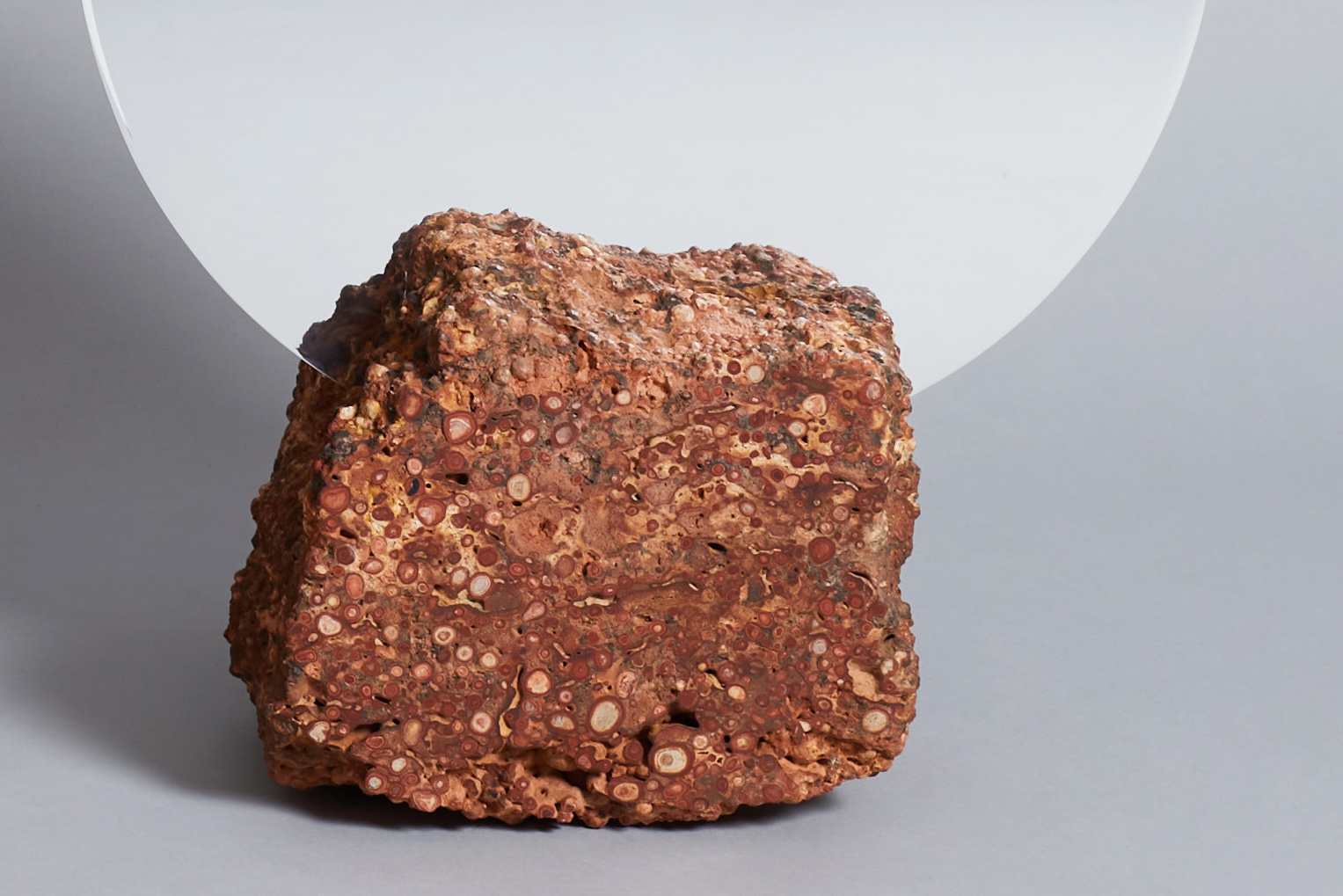
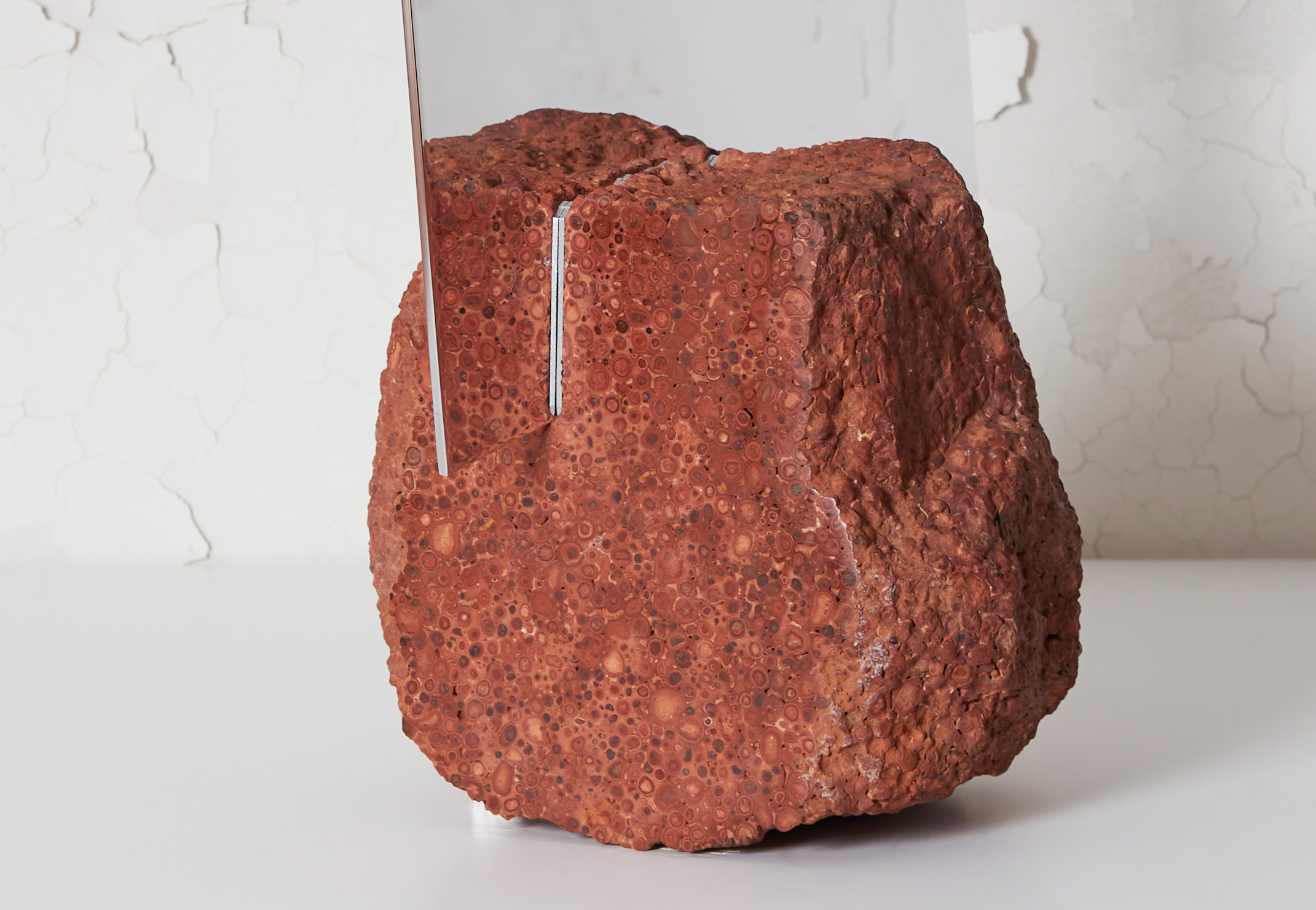
In the appearance of the cut bauxite that we sourced from Weipa, Australia’s largest bauxite mine in far north Queensland, you can see this complexity as a beautiful pattern of small and large circles. The rocks are sedimentary, and these circles are bauxite aluminium oxide ‘pebbles’ (or pisolites) concretised in a clay matrix. The tendency of the rocks is to break apart into loose pebbles, so these large rocks are comparatively rare and found deeper underground. The pebbly structure makes it difficult to produce a clean cut. The rock has uneven densities that vibrate the wire saw. These particular rocks have quite different structures and in the rock with the round mirror the groove is quite wavy for this reason.
Above: At the Rio Tinto bauxite mine in Weipa, Queensland, rocks are broken down into smaller pebbles.
Below: paper shimenawa adorn a sacred rock at Shimogamo Shrine in Japan
Our attention to these details and how they help us to develop a conceptual framework for understanding aspects of bauxite and aluminium is an illustration of how non-traditional reseach, in this case practice-based design, generate new forms of knowledge. The simple design of our mirrors, and the way we worked cautiously with the rocks, was influenced by Shinto and its tradition of venerating special rocks, but also an emerging sensibility for the value of aluminium as a technological metal imbricated with the earth and its ecosystems. In their design, we were ultimately encouraged to respect the natural happenstance of the rocks as they are. Can we accept and value nature as it exists, without change? Can design be a force for non-change? To us, these questions reasserts the consideration of how we change, or choose to not change, rocks in industrial production, but more broadly, how we choose to make, not make, or unmake.
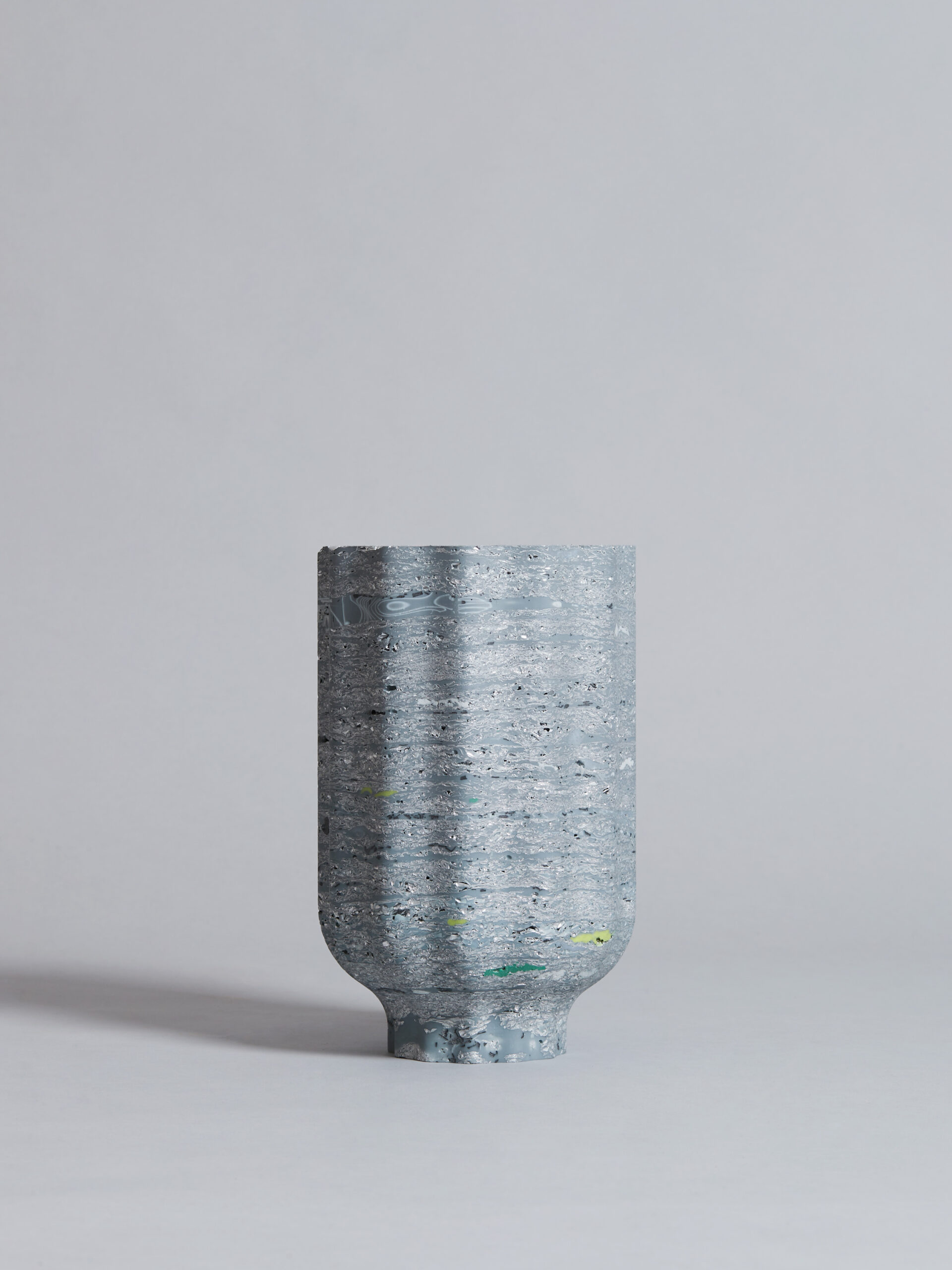
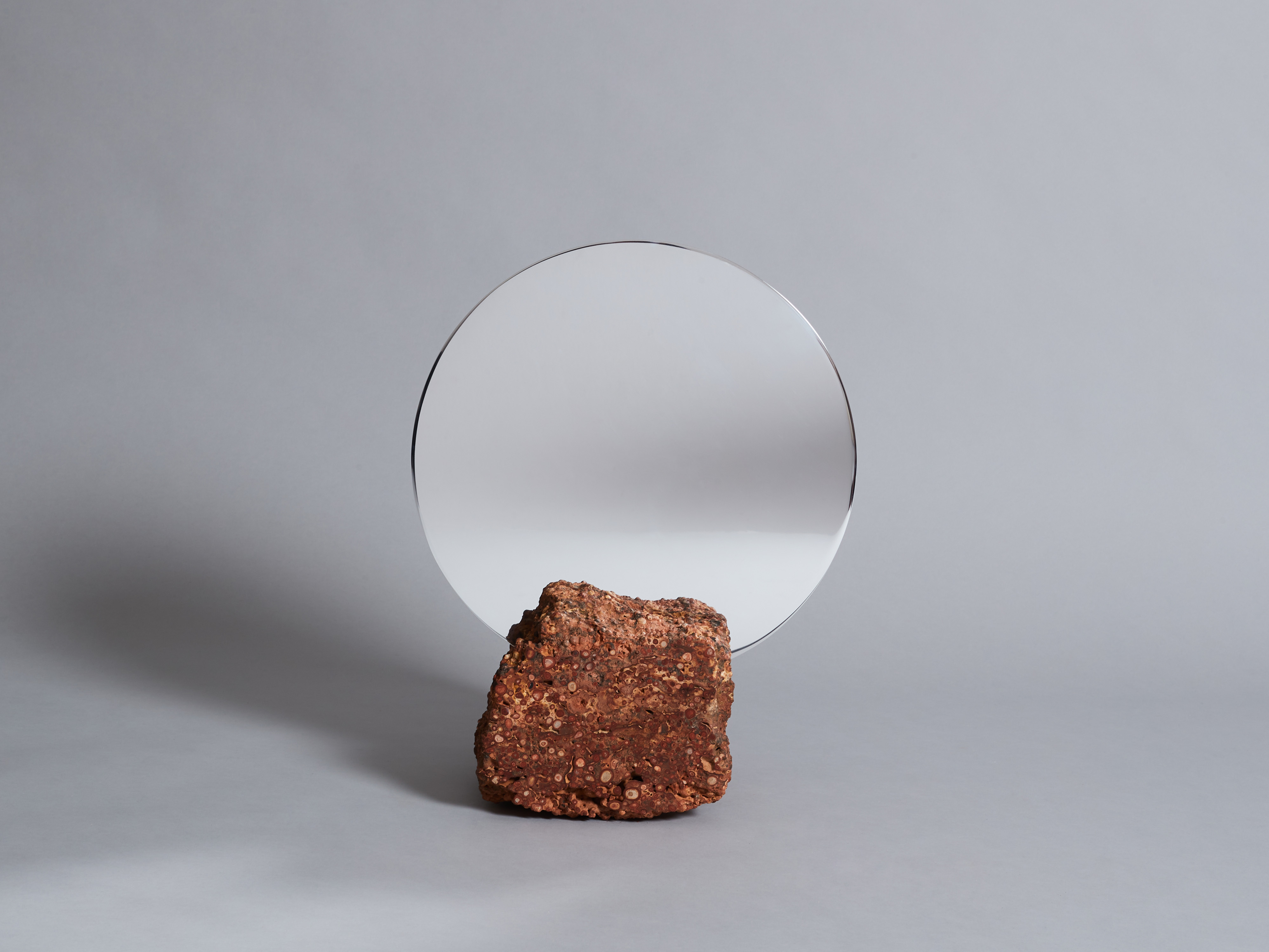
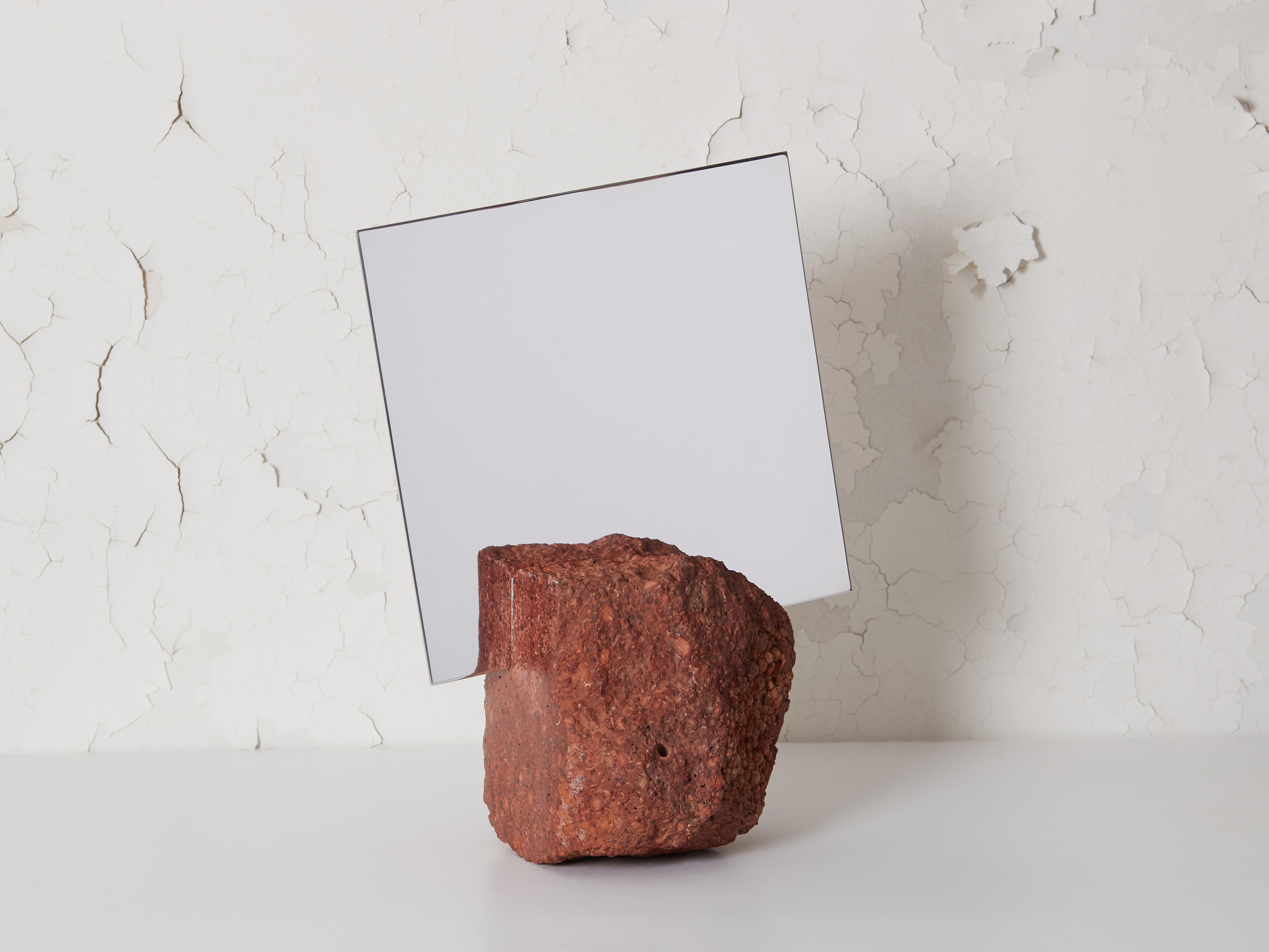
* Postscript.

Above is an image of the abandoned cryolite mine in Greenland. Cryolite is a unique mineral that was naturally occurring but very rare. It was used to extract aluminium from bauxite. The demand for cryolite was so strong that the world’s only location was entirely mined out by 1987. Nowadays synthetic cryolite is used instead, but natural cryolite has the dubious distinction of being the only mineral every mined to extinction.
This illustrates a point about humankind that motivates my primitivist and luddite efforts to constrain industry to work within ecological limits. There are insufficient bounds placed on business, less than enough in 1987 and maybe a few more in 2021 but surpassed by far greater destructive capacity. Design is a key enabler. For more than a decade Kyoko and I have been aware of the paradox of design being a profession of making, while knowing that the key skill needed to transcend our animal brained pathway to self-destruction is the skill of un-making. Or in other words, knowing when to say stop.
